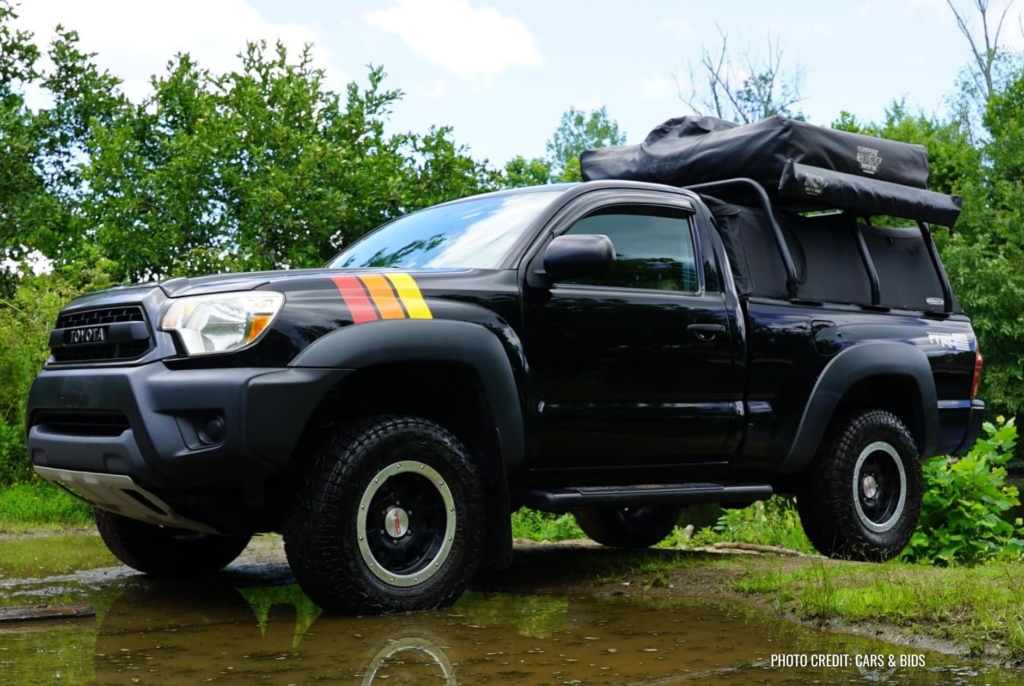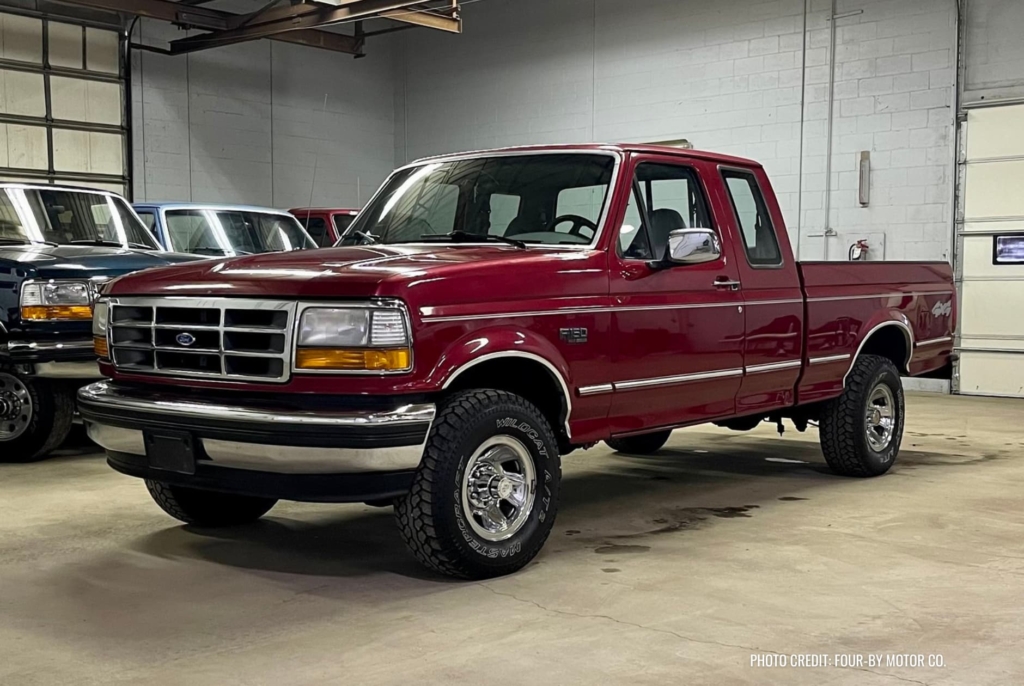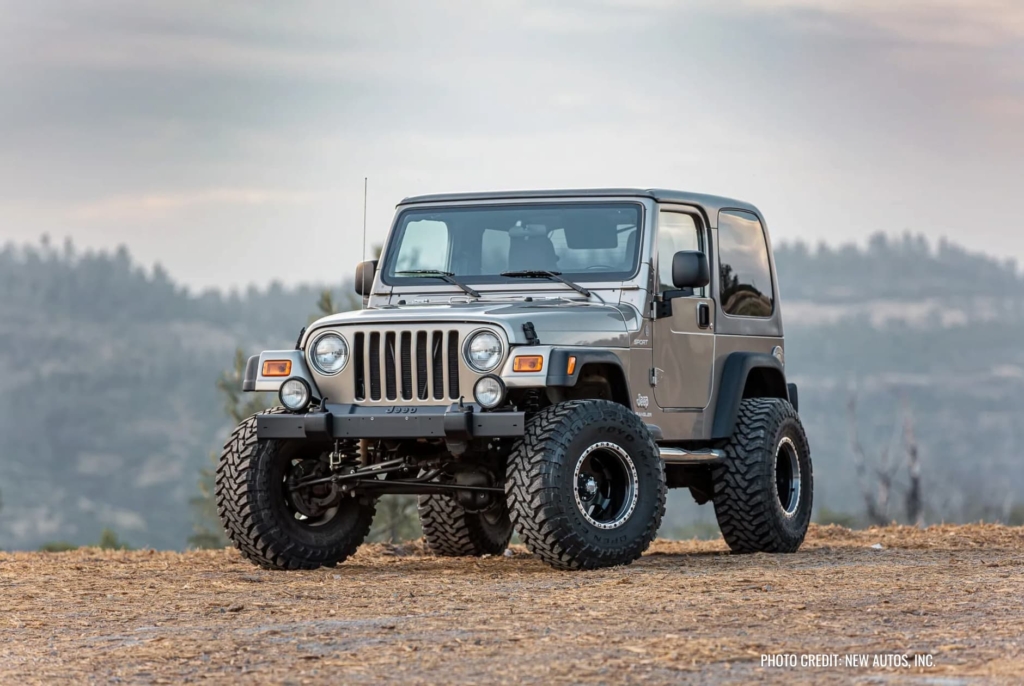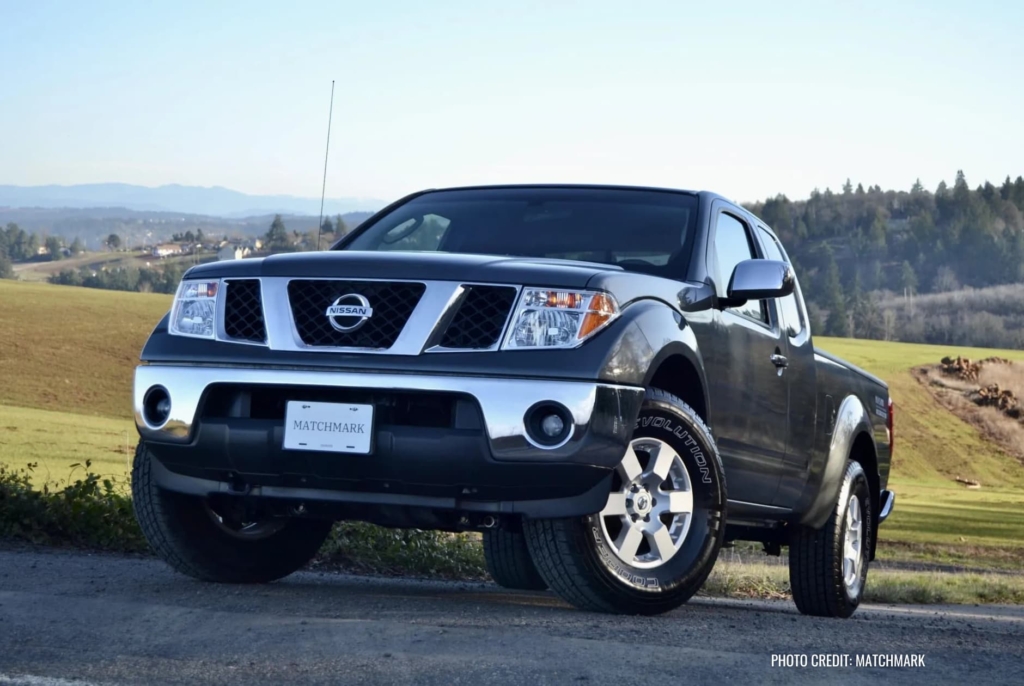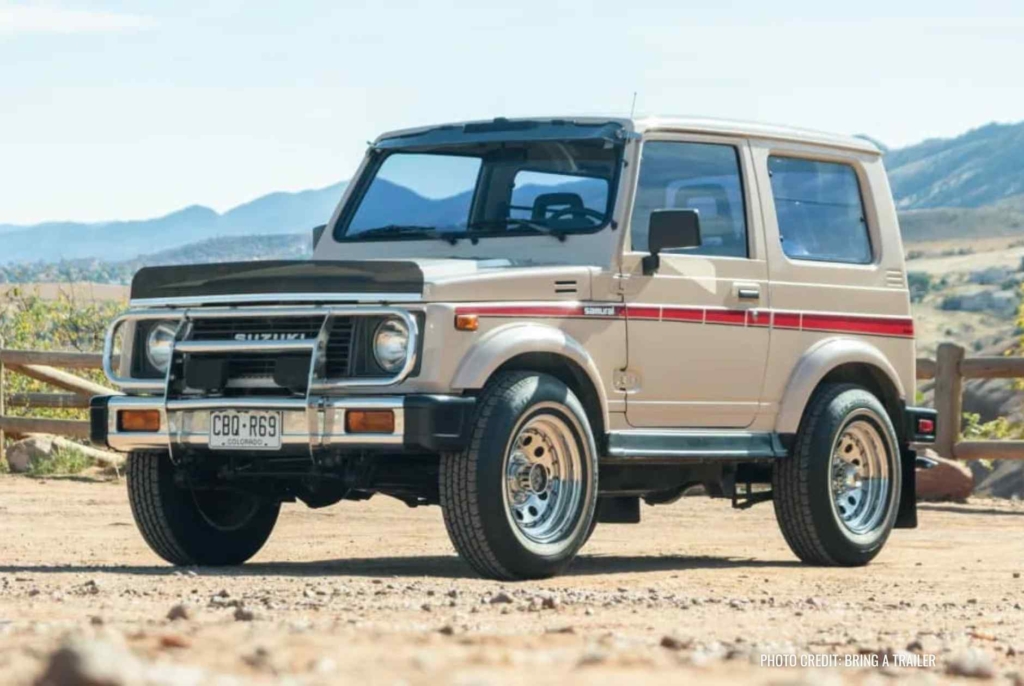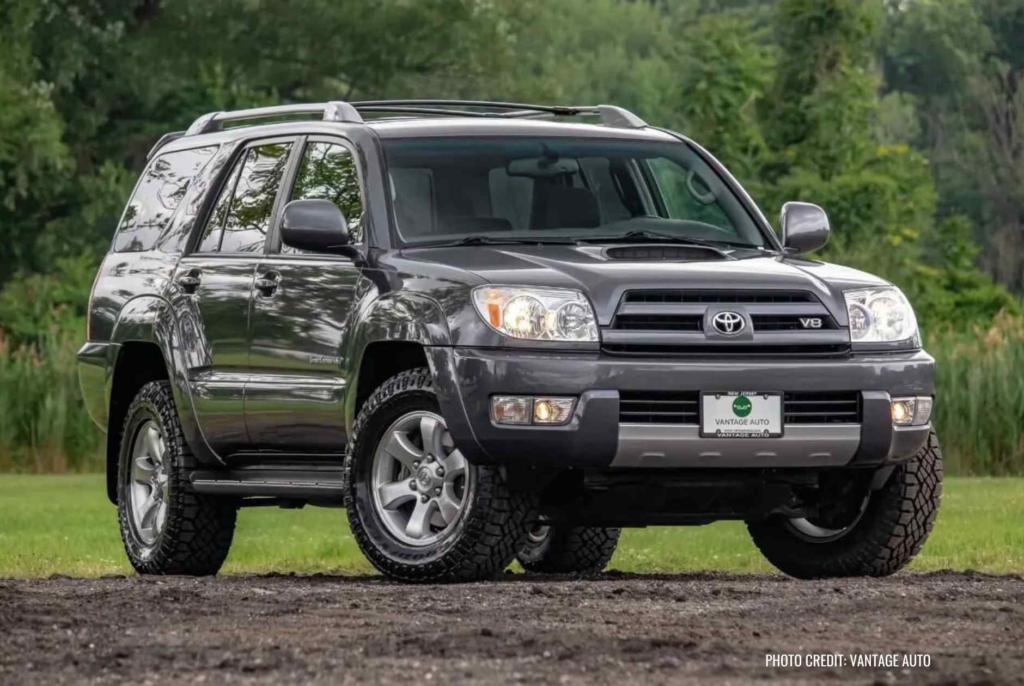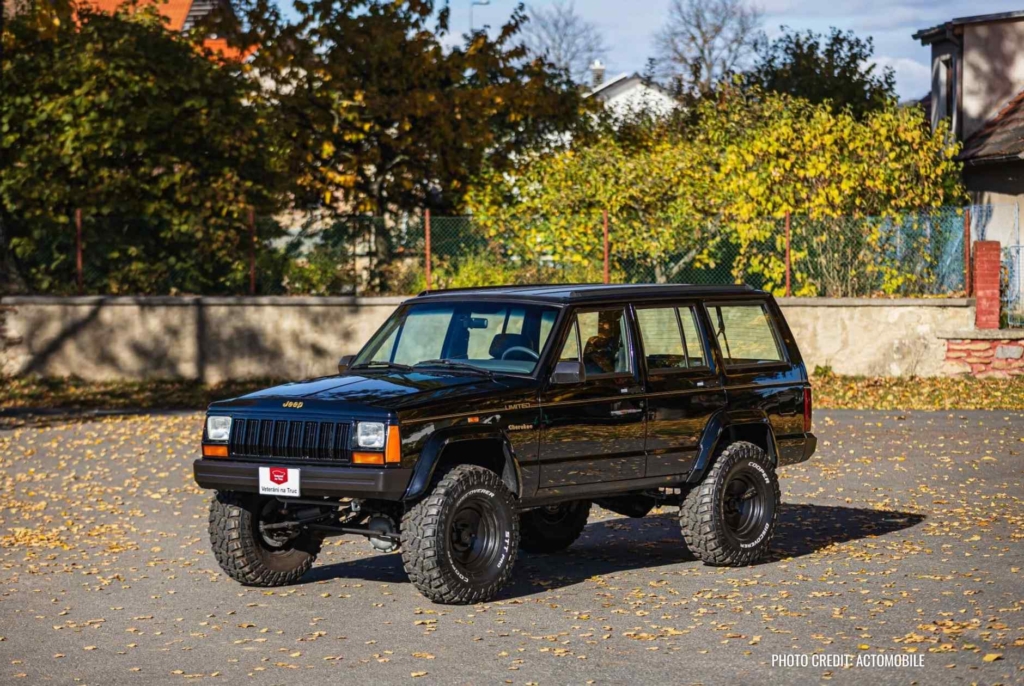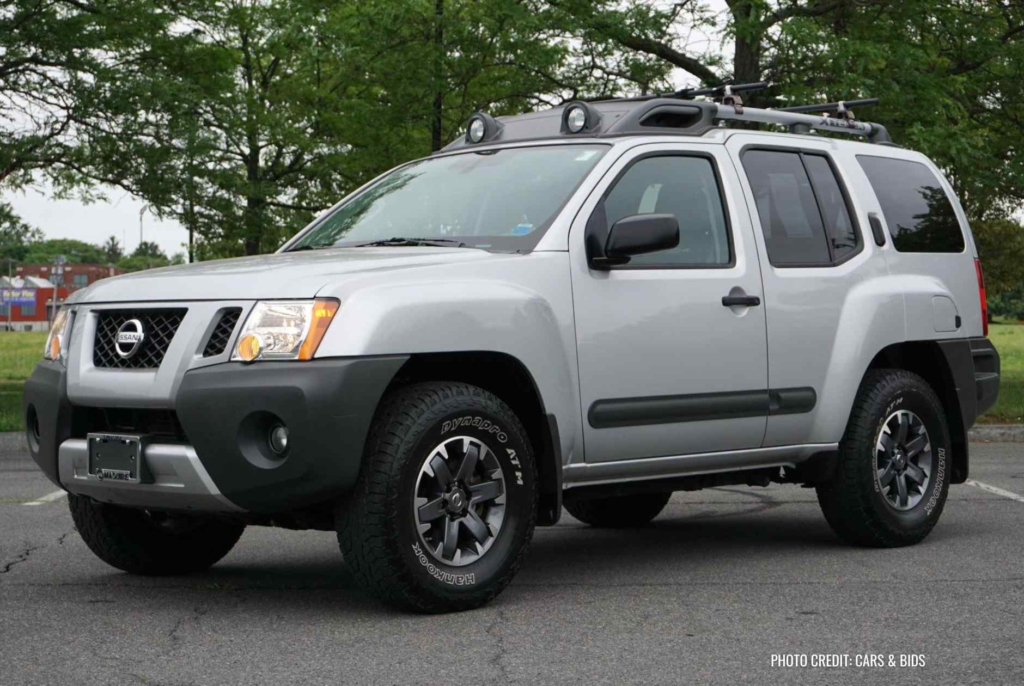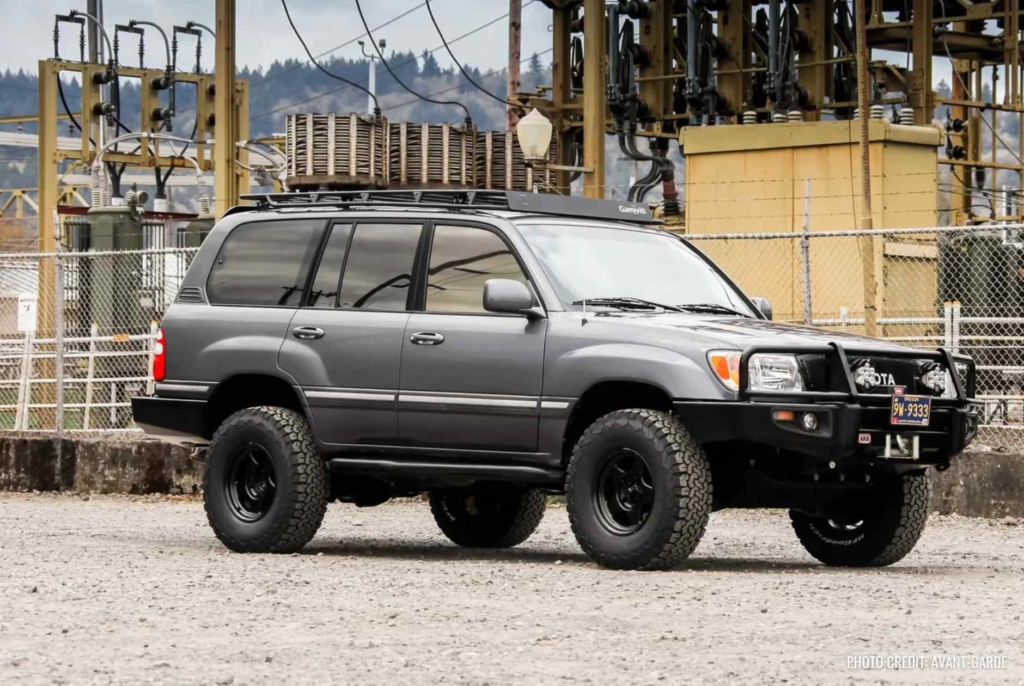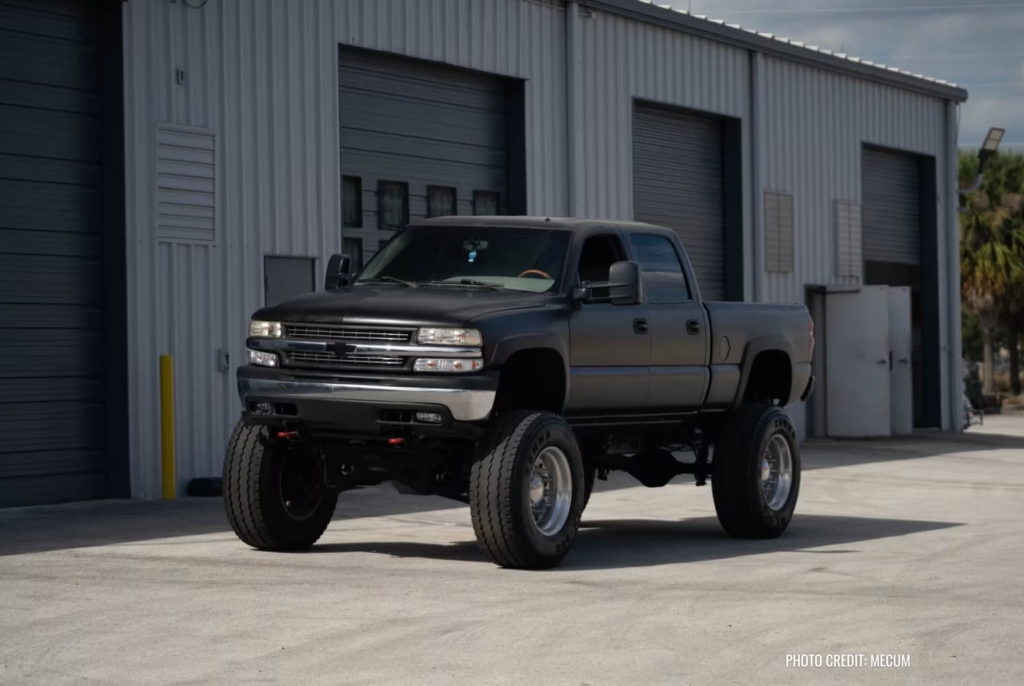In the world of off-road exploration and rugged journeys, having a reliable 4x4 is key. If you're on a budget and looking for a versatile and capable ride, we've compiled a list of the top 10 pre-owned pickup trucks and 4x4s under $20,000 that should be on your short-list to buy in 2024.
While there are dozens of pickups and SUVs to choose from, these trucks and 4x4s combine performance, durability, off-road prowess, and affordability to ensure you're ready for whatever the terrain throws your way -- while staying on-budget.
- 2005 - 2015 Toyota Tacoma (2nd Gen.)
- 1992 - 1996 Ford F-150 (9th Gen.)
- 1997 - 2006 Jeep Wrangler TJ
- 2005 - 2021 Nissan Frontier D40
- 1981 - 1998 Suzuki Samurai / Jimny (2nd Gen.)
- 2003 - 2009 Toyota 4Runner (4th Gen.)
- 1983 - 2001 Jeep Cherokee XJ
- 2000 - 2015 Nissan Xterra
- 1998 - 2007 Toyota Land Cruiser (100 Series)
- 1999 - 2007 Chevrolet Silverado (1st Gen.)
2005 - 2015 Toyota Tacoma (2nd Gen.):
Being the predecessor of the Toyota Hilux / Pickup is no easy task, but the Tacoma has earned its stripes as a highly-capable midsize pickup truck.
While most of the world knows it as the Hilux, the North American market received a more comfort-oriented counterpart the utilitarian Hilux called the Pickup. In 1995, Toyota gave the Pickup a somewhat more original name: the Tacoma. Drivers were quick to deify the Tacoma for its nimble driving experience, good fuel economy, reliability, and overall ride quality.
For the 2005 model year, Toyota released the 2nd generation Tacoma, which stuck around through the 2015 model year. Mid-cycle refreshes were offered in both 2009 and 2012, both times primarily affecting cosmetic features like bumpers, taillights, and grille.
The 2nd generation Toyota Tacoma was offered in several configurations, giving buyers options based on factors like budget, cab space, and bed size, while remaining universally reliable and capable. Trims like the Base and SR5 were fairly stripped down, while trims like the Limited, X-Runner, and TRD Pro offered more features and customization based on your preference for luxury and / or performance.
Additionally, the 2nd Generation Tacoma was offered with two engine choices:
- 2.7L 2TR-FE: 4-cylinder gas-powered engine rated at 159 hp. and 180 ft.-lb. torque. While highly reliable and easily maintainable, being a 4-cy. engine means it isn't quite as well equipped for continual work or off-road. However, it was also offered in non-North American Toyota 4x4s like the Land Cruiser Prado and Hilux.
- 4.0L 1GR-FE: 6-cylinder gas-powered engine rated at 236 hp. and 266 ft.-lb. torque. Similar to the 2.7L, the 4.0L V6 is a highly-reliable, timing chain-driven motor. It could also be found in the 4Runner, Tundra, and FJ Cruiser, and was adept at towing and hauling.
The engines were mated to either a 4 or 5-speed automatic, or 5 or 6-speed manual transmission. The 2nd gen. Tacoma was also available in either 2-wheel or 4-wheel drive, with the latter offering drivers the option to shift between 2WD, 4Hi, or 4Lo.
What To Watch For: Enthusiasts commonly recommend the 2013 or 2014 model years, when earlier kinks were smoothed out. Particularly, the earlier years of the 2nd generation were known for rust. Additionally, the leaf springs were known to break in the pre-2012 models.
For rugged terrain or frequent work duty, many buyers covet the 4.0L 1GR-FE motor. While the 2.7L works great, it can struggle under load on less friendly roads. Of course, we recommend opting for 4-wheel drive to tackle the unknown with confidence.
Price Range: A 2nd generation Toyota Tacoma can easily run you $18,000 - $20,000 or higher, depending on condition, mileage, and trim. However, the good news is that you can find good, clean examples with 150,000+ miles with budget to spare for your first off-road mods. That kind of mileage might turn off most buyers for most vehicles, but the 2nd gen. Tacoma has demonstrable build quality and longevity, making higher mileage more palatable (with good service history - always do your homework).
1992 - 1996 Ford F-150 (9th Gen.):
Seeking a truck that blends classic appeal and functionality? Enter the 9th gen. Ford F-150.
Offered from the 1992 to the 1996 model years, the 9th. generation Ford F-150, often called the "Aeronose" or "OBS" by enthusiasts, is not only one of the best 4x4s you can buy in 2024 on a budget, but it's arguable one of the best F-series truck generations ever. That's pretty high praise for a truck that's consistently one of the best-selling vehicles every year.
You can find the 9th gen. Ford F-150 in a variety of cab, bed, and trim options. Between the Custom, XL, and XLT, the most popular is the XLT, which offered the best blend of practical and comfortable. Additionally, the 9th gen. F-150 offered an Eddie Bauer edition, which was based on the XLT but with upgraded styling options like two-tone exterior, propriety wheels, and privacy glass. You could also get the Nite and SVT Lightning, the latter being a performance-oriented version with upgraded brakes, suspension, and engine modifications that went head-to-head with the GMC Syclone.
The F-150 was offered from the factory with your choice of two or four doors, 2-wheel or 4-wheel drive, and either an 8 ft. or 6.75 ft. bed. It offered the Dana 44 axle, and up to 4,000 lbs. towing with the 3.55-geared rear.
With a ton of aftermarket support, the 9th gen. makes for a great candidate to customize for your purposes, from collecting to daily-driving to weekend hauling or camping. Popular modifications include lift, A/T tires, re-gearing, exhaust, engine performance upgrades, bedliner, and aftermarket audio replacements.
When the 9th. gen. F-150 hit in the 1992 model year, it was heralded for its modern styling, upgraded suspension, and stout engine options, including:
- 4.9L Gas-Powered I6
- 5.0L Gas-Powered Windsor V8
- 5.8L Gas-Powered Windsor V8
What To Watch For: It's never a bad idea to check the engine compression of a pre-owned truck, but given that many F-150s were put to task, a compression test should be on your to-do list to help sniff out issues related to warn valves. Additional items to watch for include rust, oil leaks, and cosmetic flaws.
Fortunately, OEM and aftermarket parts are fairly easy to source to repair or upgrade most mechanical issues, and the engines are generally DIY-friendly, which helps reduce long-term cost of ownership.
Price Range: The moving average transaction price for 9th gen. F-150s is currently about $15,000 - $17,000. Prices have been on the rise due to unrelenting popularity among Ford and truck enthusiasts, as well as rising prices for newer trucks. Expect to pay a premium for low-mileage (150k or less) 4-wheel drive XLTs.
1997 - 2006 Jeep Wrangler TJ:
This list wouldn't be complete without at least one generation of Wrangler represented. While we were tempted to look at the classic Jeep Wrangler YJ or the later Jeep Wrangler JK, the TJ offers a blend of inherent rugged off-road capability, factory comfort features, aftermarket support, and affordability that makes it an absolute icon.
The Jeep TJ was the second generation of Wranglers, debuting in 1997 and running until the 2006 model year. Notable for the TJ generation was the reintroduction of rounded headlights, the utilization of the all-mighty 4.0L I6 and four-link suspension, and the launch of the Rubicon trim level. The Rubicon was the ultimate off-roader, offering selectable front and rear differentials, Dana 44 axles, and NP 241OR RockTrac transfer case with an epic 4:1 low gear. There were also improvements to the transmission options in the later years.
Engine options for the Jeep TJ include:
- 2.4L PowerTech I4
- 2.5L AMC I4
- 4.0L AMC I6
In addition to the Rubicon, the U.S. market was offered over a dozen trim levels to choose from, including the standard SE, X, and Sahara models with differences to off-road capability and comfort features, as well as more niche-focused, limited run trims like the Tomb Raider Edition (approx. 1,000 made), Willys Edition, and Golden Eagle, each with mostly cosmetic differences.
In short, the Jeep Wrangler TJ is one awesome value with plenty of inherent capability and a depth of aftermarket support to make your own.
What To Watch For: The Jeep TJ was only offered commercially as a two-door, so if a Jeep is for you, but you require the extra space, you may consider a Jeep Cherokee or Grand Cherokee (which, we think is also one heck of a value), or even an Unlimited trim Wrangler introduced in the subsequent generation.
While the improved suspension arrangement and upgraded transmission options did wonders for on-road comfort, buying a Wrangler TJ under the pretense of it being your go-to ride for long trips may not be advised.
As with any machine, the Jeep Wrangler TJ is as good as its maintenance. So, finding an example with limited off-road or towing history may help keep your investment on the road longer. Additionally, records of regular maintenance and fewer modifications, especially undocumented, can affect reliability.
Price Range: The moving average transaction price for 1997-2006 Jeep Wrangler TJs comes in at just under $20,000 for more well-preserved examples. Of course, bargains can be had for $10,000 or less for higher mileage and pre-modified examples.
2005-2021 Nissan Frontier D40:
Similar to the Toyota Tacoma, the Nissan Frontier is a modern version of a long-running mid-sized utility truck: the Nissan Hardbody D21, which was offered from 1985 to 1996. For 1997, North American markets got the Frontier D22, while the rest of the world got the Navara.
The Nissan Frontier D40, introduced for the 2005, has solidified its place as a reliable and affordable midsize truck in the market. As the successor to the Hardbody, the Frontier D40 combines a rugged design with commendable performance, making it an attractive option for those seeking a capable 4x4 pickup truck on a budget.
Under the hood, the Frontier D40 offers a variety of engine options over the years. This diversity allows buyers to tailor their choice based on their intended usage, whether it be for daily commuting or towing and off-road adventures.
- 2.5L I4 QR25DE: The smaller of the two original engine options, the 2.5L gas-powered inline-4 was tuned to 152 hp. and 171 lb.-ft. torque.
- 4.0L V6: Compared to the 2.5L I4, power figures increased significantly to 269 hp. and 288 lb.-ft. torque. This engine option was available until the 2020 model year, when it was supplanted by the 3.8L V6
- 3.8L V6 VQ38DD: Added in 2020 in place of the 4.0L V6, the 3.8L V6 found in the 2020+ Nissan Frontiers powers the Pro-4X and other higher-end trims. Horsepower increased over the 4.0L V6 to 310 hp.,
Speaking of off-road capabilities, the Frontier D40 has proven its mettle on diverse terrains. With a robust chassis and available features like a part-time 4WD system and advanced off-road suspension, it tackles rough trails with confidence. The PRO-4X trim, in particular, enhances off-road prowess with features like skid plates, Bilstein shocks, and an electronic locking rear differential.
Over the years, the Nissan Frontier D40 has earned recognition for its durability and performance, winning awards such as the J.D. Power and Associates Initial Quality Study.
What To Watch For: Many enthusiasts note the 2012 - 2019 model years as the best due to refinements in the engine and transmissions, plus enhanced features and options. Some users have reported concerns about fuel efficiency and road noise, which could be potential drawbacks for certain buyers.
Additionally, the lack of a significant refresh until the D41 was launched in 2022 meant generally underwhelming interior options, exterior cosmetics, and towing capacity compared to other mid-sized trucks for sale in its class.
Unsurprisingly, we recommend finding a 4.0L V6 example with 4-wheel drive, which combines reliability, ease of maintenance, and available power for daily use, off-road use, and towing.
Price Range: Documented Frontier D40 sales are not quite as readily available as other trucks and 4x4s on this list, but finding a well-equipped, highly-original, lower-mileage 2012 - 2019 example should run you around $15,000, with variance based on condition, history, modifications, and trim. A PRO-4X, which you absolutely should consider if you're planning to take off-road, will typically run you a bit more.
1981 - 1998 Suzuki Samurai / Jimny (2nd Gen.):
The second generation of the Suzuki Jimny, spanning from 1981 to 1998, continued the legacy of its predecessor as a compact and capable off-road vehicle. This iteration, often referred to as the SJ410/SJ413, further solidified the Jimny's reputation for off-road prowess and durability.
Introduced in the early '80s, the second-generation Suzuki Jimny built upon the success of the original model. With its boxy and utilitarian design, it gained popularity as a reliable and affordable choice for off-road enthusiasts and urban drivers alike.
The SJ410 initially featured a 1.0L four-cylinder engine, while the SJ413, introduced in 1984, upgraded to a more powerful 1.3L engine. These engines, although not known for their high horsepower, provided sufficient torque for off-road adventures and contributed to the Jimny's reputation for reliability. In 1986, the Jimny was introduced in the U.S. as the Samurai with great results, offering a low price but ample features and outselling the Wrangler in 1987.
The second-generation Jimny maintained its strong off-road capabilities. It featured a robust ladder frame chassis, solid axles front and rear, and a part-time 4WD system. The compact dimensions of the vehicle, along with a lightweight construction, made it agile on challenging terrains. While lacking some of the advanced features seen in modern off-road vehicles, the simplicity and durability of the second-generation Jimny endeared it to off-road enthusiasts.
During its production period, the second-generation Jimny didn't receive widespread recognition through formal awards. However, its popularity and reputation for reliability in off-road scenarios contributed to its success in the market.
Despite its rugged charm, the second-generation Jimny had its share of drawbacks. The boxy design, while contributing to its off-road capability, limited interior space, making it less suitable for those prioritizing comfort or carrying capacity. Additionally, as a vehicle designed primarily for off-road use, highway comfort and noise levels might not have been on par with more road-oriented counterparts.
What To Watch For: Because of its small stature, the Samurai was prone to roll-over. For models beginning in 1988, the track was widened 10 cm., giving greater overall stability. Later that year, improvements to the suspension and a lower fifth gear improved on-road comfort and capability, as well.
Additionally, if you're buying your budget 4x4 for more than occasional use or for use on major roads or highways, you may find the 660 cc. engine to be too underpowered, as these machines are not known for their top speeds or their enthusiasm for getting there.
Finally, if you're buying a right-hand drive Jimny imported from Japan, you will want to ensure that all required import and titling documentation are available, and that titling in your state can be complete to make your Jimny compliant with local law. Trust us, there's no chance you'll be outrunning a police cruiser.
Price Range: The Samurai might be one of the less-expensive options on this list, with a 5-year moving average transaction price of just $12,864. Expect to pay a premium for 1.3L options, model year 1988 or later, and with low mileage and largely-original condition.
If you're feeling adventureous and patient, you can also snag a great deal on an imported Jimny using a site like CarsFromJapan.com. However, we recommend consulting with a professional importer and your state's motor vehicle association to make sure you have the right documentation for titling in your state.
2003 - 2009 Toyota 4Runner (4th Gen.):
The 4th generation of the Toyota 4Runner, introduced in 2002 as a 2003 model, continued the model's evolution into a more refined and versatile SUV. This generation aimed to balance on-road comfort with off-road capability while introducing modern design elements and advanced features.
The fourth-gen 4Runner offered two engine options for North American-spec models:
- The standard engine was a 4.0L V6 1GR-FE, producing approximately 236 hp. and 266 lb.-ft. of torque.
- Additionally, a larger 4.7L V8 2UZ-FE engine became available on certain trims, delivering 260 hp. and 306 lb.-ft. of torque.
These engines were coupled with a five-speed automatic transmission, contributing to smooth power delivery.
Toyota provided various trim levels to cater to diverse preferences. The SR5 trim served as the base model, offering a balanced set of features. The Sport Edition emphasized a more athletic appearance and featured enhancements for improved performance. The Limited trim focused on luxury, incorporating high-end amenities such as leather upholstery and advanced audio systems.
The 4th gen. 4Runner maintained its robust off-road capabilities. The available Multi-Mode 4WD system allowed drivers to switch between two-wheel drive, four-wheel drive, and a low-range setting for challenging terrains. The optional Downhill Assist Control (DAC) and Hill-start Assist Control (HAC) enhanced the vehicle's ability to navigate steep inclines and declines. The suspension system continued with an independent double-wishbone front suspension and a solid rear axle for a balance between off-road capability and on-road comfort.
What To Watch For: The 4th generation 4Runner offers drivers a highly-dependable platform, with many examples still on the road with 200,000 or more miles with only basic maintenance required. When sourcing your 4th gen., look for an example with documented service records, specifically fluids.
Head gaskets in the earlier model years have been known to fail, as well. If opting for the 4.7L V8, you may experience exhaust manifold leak upon cold start, which may cause issues for state emissions testing. However, this can often be solved affordably with replacement headers. Finally, be sure to check for frame rust.
Price Range: Prices for the 4th gen. 4Runner are becoming more approachable, especially with anticipation of the upcoming 6th generation. Average transaction prices in the last 12 months are hovering around $17,000 for lower mileage examples, per data from CLASSIC.com.
1983 - 2001 Jeep Cherokee XJ:
Produced for the 1983 to 2001 model years, the Jeep Cherokee XJ holds a special place in the history of SUVs. Introduced as a compact, unibody design, it departed from the traditional body-on-frame construction, setting a trend for future SUVs. The XJ became renowned for its rugged capabilities and iconic design, leaving a lasting impact on the SUV market.
The Cherokee XJ featured a range of engine options over its production span. Initially offering a 2.5L four-cylinder and a 2.8L V6, the XJ later became known for its reliable 4.0L inline-six engine. The 4.0L engine, producing around 190 hp. and 225 lb.-ft. of torque, became a hallmark of the XJ's performance, praised for its durability and low-end torque.
The Cherokee XJ was available in various trim levels, including the base model, Pioneer, Chief, Laredo, and Limited. Each trim offered different levels of comfort and features, allowing buyers to tailor their Cherokee to their preferences. The Limited, for example, often featured more upscale amenities, while the base models were geared towards those seeking a rugged and utilitarian SUV.
The Jeep Cherokee XJ is an exceptional off-roader. Its unibody construction, coupled with a solid front axle and leaf-spring suspension in the rear, provided a robust platform for off-road adventures. The XJ's compact size and maneuverability made it well-suited for tight trails.
The availability of the Command-Trac and Selec-Trac 4WD systems, along with optional Dana axles, contributed to its prowess in various off-road conditions. Towing capacity varied depending on the configuration but generally ranged from 2,000 to 5,000 pounds.
What To Watch For: Despite its strengths, the Cherokee XJ had some known issues. Rust could be a concern, especially in regions with harsh weather conditions. Some owners reported issues with the automatic transmissions, and certain model years may have experienced problems with the cylinder head cracking.
Interior comfort and noise levels were not always on par with more modern SUVs, reflecting the era in which it was produced.
Price Range: Over its production run, nearly 3 million Jeep Cherokee XJs were made. So, finding a Cherokee XJ for sale isn't really a difficult task. However, with is affordable price-point, durability, and inherent off-road prowess, many Cherokee XJs on the market are extremely "enjoyed." Higher mileage and modified examples with the factory powertrain can be found for below $10,000, while moderate mileage and in mostly original condition will cost between $11,000 - $15,000, with 5 year median of $13,043.
2000 - 2015 Nissan Xterra:
The Nissan Xterra was as a rugged and versatile SUV designed for both on-road comfort and off-road adventures. Drawing inspiration from Nissan's successful Pathfinder, the Xterra was crafted to appeal to a niche market seeking a capable, midsize SUV with a focus on outdoor exploration.
The Xterra offered various engine options throughout its production years. Initially equipped with a 2.4L four-cylinder engine, Nissan later introduced a more powerful 3.3L V6 engine, producing around 170 to 210 horsepower, depending on the model year. This robust V6 engine became synonymous with the Xterra's performance, offering a blend of power and reliability. Transmissions included both manual and automatic options.
You can find the Xterra available in several trim levels, each catering to different preferences and needs. The base XE trim provided essential features for those seeking a rugged and utilitarian SUV. The SE trim introduced more comfort and convenience features, while the Off-Road and PRO-4X trims, introduced later, specifically targeted off-road enthusiasts with enhanced suspension and other off-road features.
The Xterra gained popularity for its commendable off-road capabilities. Featuring a robust body-on-frame construction, the Xterra had a fully independent front suspension and a solid rear axle, providing a balance of on-road comfort and off-road durability. The Off-Road and PRO-4X trims came equipped with features such as hill descent control, hill start assist, and locking rear differentials, enhancing their ability to tackle challenging terrains. The Xterra's towing capacity varied but generally ranged from 3,500 to 5,000 pounds, depending on the engine and configuration.
What To Watch For: Despite its strengths, the Xterra had some known issues. Owners occasionally reported concerns about interior build quality and comfort, with materials that may not have matched the standards of some competitors. Fuel efficiency, especially with the V6 engine, was another area where the Xterra fell behind some more modern SUVs. Additionally, as with many SUVs of its era, some Xterra models were susceptible to rust in areas prone to road salt during winter.
Price Range: If you know, you know. The Xterra enjoys a cult-like following for its off-road utility, unique aesthetic, and general affordability. The more basic trim levels with the four-cylinder engine can be had for a few thousand dollars, while the more well-appointed, lower-mileage Nissan Xterras will set you back between $13,000-16,000, per the latest sales data from CLASSIC.com.
1998 - 2007 Toyota Land Cruiser (100 Series):
The 100 Series Toyota Land Cruiser represented a continuation of the Land Cruiser legacy, emphasizing a blend of luxury, off-road capability, and durability. It succeeded the 80 Series and set new standards for the full-size SUV market.
The standard engine was a 2UZ-FE 4.7L V8, producing around 235 horsepower and 320 lb.-ft. of torque. This engine was coupled with a 4-speed automatic transmission originally, and later a 5-speed automatic, delivered strong performance both on and off the road.
The 100 Series Land Cruiser was typically available in a single trim level, packed with a wealth of standard features. This reflected Toyota's approach of offering a fully-equipped luxury SUV without tiered trim options.
The Lexus LX, often considered the luxury counterpart to the Toyota Land Cruiser, shared the same platform and many mechanical components with its Toyota counterpart. The LX featured a more refined interior, additional luxury amenities, and distinctive styling. While both vehicles targeted the luxury SUV market, the Land Cruiser maintained a reputation for its robustness and off-road capability, making it the preferred choice for those who valued both luxury and rugged performance.
Renowned for its off-road prowess, the 100 Series Land Cruiser featured advanced technologies to conquer challenging terrains. Equipped with a full-time 4-wheel-drive system, a two-speed transfer case, and locking center and rear differentials, it could handle diverse off-road conditions. The robust solid front and rear axles, coupled with a sophisticated suspension system, provided exceptional articulation and wheel travel.
What To Watch For: While the 100 Series Land Cruiser was highly regarded, it was not without its known flaws. Some owners reported concerns about fuel efficiency, as the powerful V8 engine could be thirsty, especially in urban driving conditions. However, a 5-speed transmission added some efficiency when introduced for the 2003 model year, and the 2UZ-FE added VVT-i for the 2006 model year, improving power and fuel economy.
The sophisticated features, while adding to the overall comfort and capability, also meant that repairs and maintenance could be expensive. One of the more common issues is a leak from the exhaust manifold. Additionally, if you opted for the higher-end Lexus LX, the hydraulic suspension offers a smooth ride but will require servicing to keep in good working order.
Price Range: The J100 has had a resurgence in popularity in recent years, making it one of the more pricey vehicles on this list with a $23,500 average sales price last year. However, many examples can be found with higher mileage for more reasonable prices. And, because they are generally considered a high-end vehicle, many examples offer exceptional service history.
1999 - 2007 Chevrolet Silverado (1st Gen.):
Introduced as a successor to the C/K series, the Chevrolet Silverado aimed to set new standards in terms of performance, versatility, and design within the competitive mid-size pickup truck market.
The 1st generation Chevrolet Silverado 1500 offered V6 and V8 gas-powered engine options to cater to a broad spectrum of buyers. Heavy duty variations, offered with the suffix HD, added a 6.6L Duramax diesel-powered V8 to the mix. The lineup of gas-powered engines in the 1500 included:
- 4.3L Vortec V6
- 4.8L Vortec V6
- 5.3L Vortec V8
- 6.0L Vortec V8
The most notable engine was the Vortec 5.3L V8, delivering the the highest horsepower and torque, making it a popular choice for those seeking a blend of power and efficiency. Transmissions included both automatic and manual options, providing flexibility to drivers.
Trim levels were designed to cater to different needs, from workhorse capabilities to more luxurious features. Common trims included the base model, LS, LT, and the performance-oriented SS. The base model typically offered essential features for work and utility, while the higher trims introduced more comfort and convenience features.
The GMC Sierra, the Silverado's sibling under the General Motors umbrella, shared the same platform and most mechanical components, differing mainly in styling and available features. The primary distinctions between the two were in styling, available features, and branding. The Sierra typically positioned itself as a more premium offering, appealing to buyers who sought a higher level of refinement and upscale features in their full-size pickup.
While the primary focus of the Silverado was on towing and hauling, it had solid off-road capabilities, especially in its Z71 off-road package. The Z71 package included upgraded suspension components, skid plates for underbody protection, and off-road tires, enhancing the Silverado's ability to navigate rough terrains. The solid rear axle and independent front suspension contributed to the truck's durability and stability during off-road adventures. Towing capacity varied depending on the engine and configuration, ranging from approximately 6,000 to 10,000 pounds.
What To Watch For: Despite its strengths, the 1st generation Silverado 1500 had some known issues. Commonly reported problems included issues with the automatic transmission, particularly in earlier model years. Some owners also cited concerns about interior build quality, with materials that may not have matched the standards of some competitors. Additionally, like many trucks of its era, certain Silverado models were susceptible to rust, particularly in regions with harsh winter conditions.
Price Range: The price for a 1st generation Chevrolet Silverado 1500 ranges greatly based on factors like mileage, service history, powertrain, and trim. Lower-spec'd models, including those with a V6 or two-wheel drive, can be found for well below $10,000, while higher-end models, including those with with the Z71 package or heavy duty diesel engine, can reach $15,000 and even $20,000 with low mileage and exceptional service history.
Shop Trucks & 4x4 for Sale.
Browse over 1,000 new and pre-owned off-road and overland vehicles for sale now right here on Fourbie, the best online marketplace for rare, classic, and custom pickup trucks and 4x4s.

